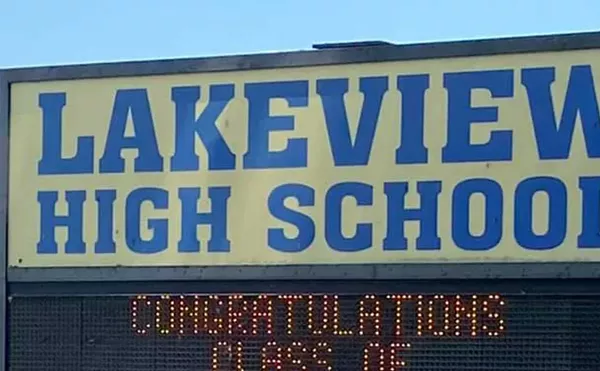
Audio By Carbonatix
[
{
"name": "GPT - Leaderboard - Inline - Content",
"component": "35519556",
"insertPoint": "5th",
"startingPoint": "3",
"requiredCountToDisplay": "3",
"maxInsertions": 100,
"adList": [
{
"adPreset": "LeaderboardInline"
}
]
}
]
Detroit sportswriter Dan Ewald pays homage to his old friendGeorge “Sparky” Anderson in this book. Ewald recounts his last visit with Sparky only days before the death of the baseball legend. The two old friends spent most of the three day visit at the kitchen table in Anderson’s Thousand Oaks, Ca. home. There, they took turns telling the stories of their time together. One of the best just may be in the preface where Ewald describes an unlikely scene at the airport when he happened to have Anderson’s dental bridge in his pocket. He goes on to tell of his conversation with the befuddled security guard about why he has Anderson’s teeth and of the fellow passenger who offered to buy them.
Ewald was the public relations director for the Detroit Tigers when Sparky was hired as manager early in the 1979 season. The two soon became fast friends. When Sparky’s agent committed a breach of faith and was released he asked his friend Ewald to assume the responsibilities. They did not sign a contract; they shook hands to seal the deal. They did not like the titles agent or representative, so they termed Ewald’sjob as “friend.” Their close working relationship evolved into a best friendship, with both men expressing the greatest respect for the other.
Dan Ewald wrote this as a labor of love for his friend and it shows through on every one of the pages, which are filled with a delightful assortment of anecdotes about one of the last genuine “characters” in baseball. Sparky’s ability to fracture the English language was reminiscent of Yogi Berra or Casey Stengel. Yet his meaning was always abundantly clear.He was a master communicator who got his point across with unforgettable syntax.Ewald tells of a time when a writer asked if he could use a certain quote that he was not sure Sparky had said; he told the man to go ahead, if Sparky hadn’t said it yet he probably would in the near future.
Sparky loved to talk and he was genuinely concerned about people. Ewald stresses this attribute of Anderson as one of the reasons his players played so hard for the man. He became a father figure for many young ballplayers. When asked how many good players it took to win a championship Sparky replied, “A couple good players and 25 good men.” That is why he worked so hard to instill discipline and respect into his young charges, often by setting an example.
Sparky was the only manager who refused to coach replacement players during the strike in 1995 the final year of his contract. The move caused a rift with management and Sparky wisely announced his retirement at the end of the season. That action avoided what could have been a PR nightmare for the Tigers and baseball. The man was concerned about his beloved game more than himself.
Anderson was most proud of establishing the charity CATCH to help pediatric patients in Detroit. The charity is still going strong three years after Sparky’s demise. One of Anderson’s wonderful quotes was, “There is nothing in this world that you will ever do that’s better than helping a child.” He could always be counted on to spend an extra few minutes if children were present.There was only one Sparky, just like there was only one Babe. Sparky got his nickname as a fiery minor league player with a propensity for arguing with umpires. An announcer once observed a coming confrontation with the comment, “sparks are about to fly,” the rest is history. Dan Ewald gives us an inside look at much of that history. There are stories that warm the heart and make us realize why this man was so popular. This book is a must for any true Tiger fan and a joy for baseball fans everywhere.





